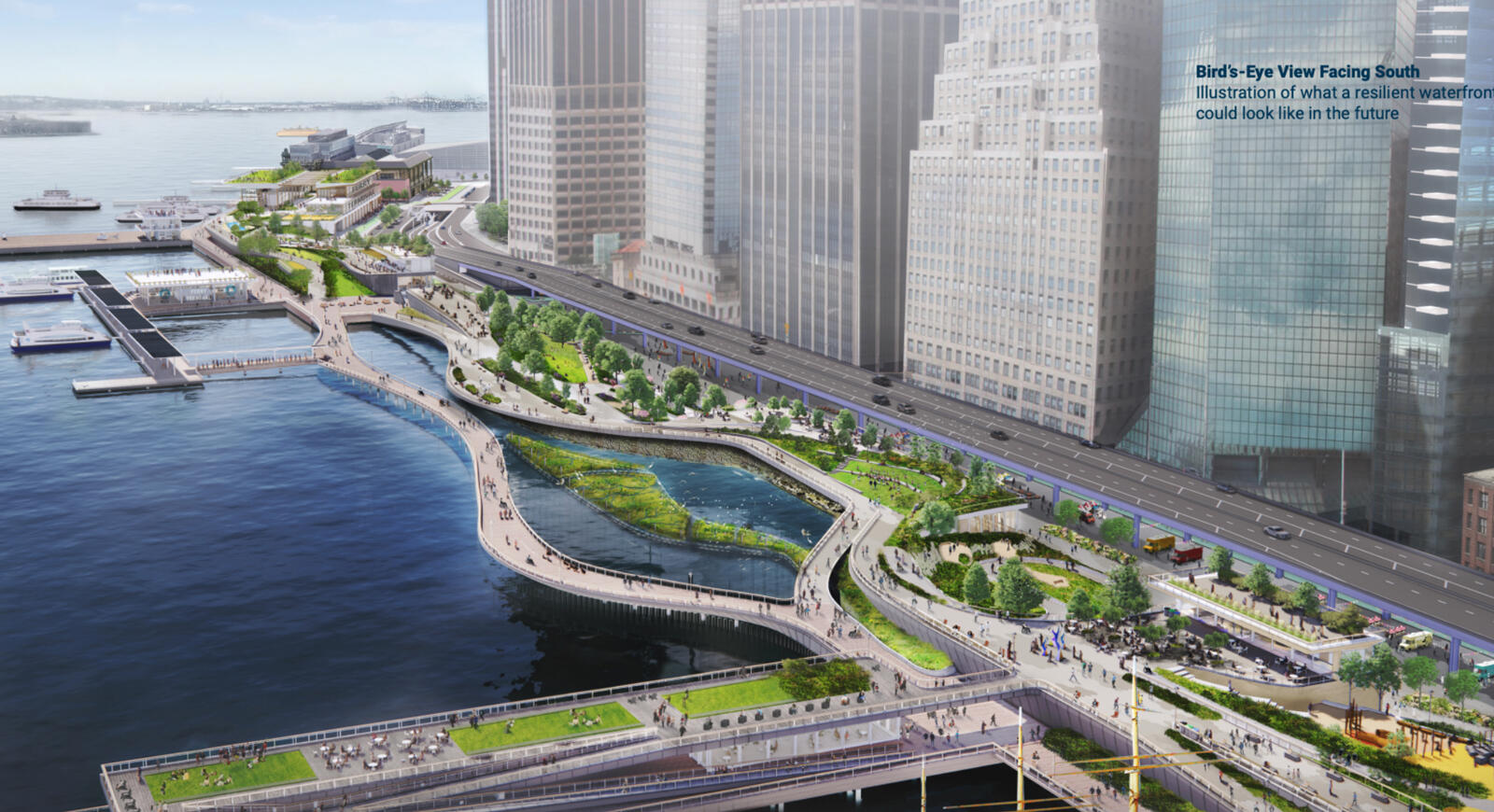New York City is thinking big to protect Lower Manhattan from climate change.
A new proposal from the city’s economic and climate leaders calls for a two-level, mile-long esplanade that would protect 140 acres of low-lying land in FiDi and the Seaport from rising seas and storm surges, the Commercial Observer reported. If built, the project would extend the shoreline by 110 feet into the East River and create open public space along the coast.
The lower level of the esplanade would sit just three to five feet above the river, forming a direct path between the Battery and the Brooklyn Bridge and protecting against rising seas, according to the plan from the New York City Economic Development Corporation and the Mayor’s Office of Climate Resiliency. The upper level, a 13- to 15-foot storm wall, would thwart surges like those seen during Superstorm Sandy in 2012.
“There’s no doubt climate change is here,” said Rachel Loeb, the president and CEO of the EDC, in a statement. “If we do not take action now, residents, businesses and critical infrastructure are put in jeopardy.”
The unfunded waterfront project would cost between $5 billion and $7 billion, but would prevent up to $1 billion in yearly damages by the time it’s finished in the 2050s, according to the authors of the plan. Unlike a similar idea called “Seaport City” pitched by the Bloomberg administration, the plan unveiled Wednesday includes virtually no commercial development. A press release mentioned that cafes could be part of it.
Read more


Just one storm left unmitigated can prove enormously expensive. After Sandy, the Federal Emergency Management Agency sent more than $14 billion to governments and nonprofits involved in recovery work, and another $1 billion in individual assistance. The city anticipates more than $20 billion in damages from flooding between 2021 and 2100 if no action is taken.
The city is considering several funding sources, both federal and local. It has already requested funding from FEMA, which could send about $50 million. The plan also identified the U.S. Army Corps of Engineers and federal transit grant programs as potential benefactors, capable of providing up to $3 billion and $360 million, respectively. The city would also likely add funding of its own.
“It was the East Side that was devastated during Superstorm Sandy,” Catherine McVay Hughes, former chair of Manhattan Community Board 1, told the Observer. “Water went blocks in. It just didn’t stop at the water’s edge and it’s taken years to rebuild the infrastructure that was damaged,” Hughes said.
Some 37 percent of buildings in Lower Manhattan will be in danger of storm surges in 30 years, according to the EDC.
The plan still faces many hurdles, not to mention a new administration taking office in just two days. They include an environmental impact review and construction permitting, which alone could take five or more years.
The Seaport City proposal, part of a larger array of resiliency measures suggested by the Bloomberg administration in 2013, said a levee could both protect the East River shoreline south of the Brooklyn Bridge and create an area for both residential and commercial development. “Using the model of Battery Park City, which was designed to withstand major flooding, the city will work with local communities, businesses and property owners to explore opportunities for a new neighborhood,” the proposal read.
The de Blasio administration later went ahead with a much smaller plan to elevate East River Park. Local residents tried to stop it but lost their court battle this month.
[Commercial Observer] — Joe Lovinger
